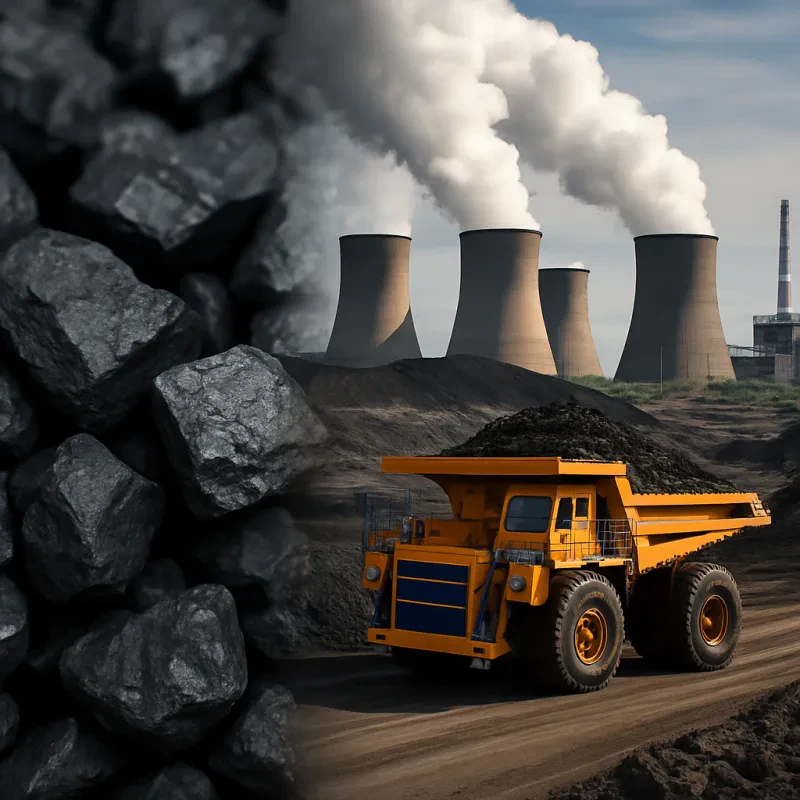Today, coal consumption is influenced by a mix of factors that shape its role in our energy landscape. One of the biggest drivers is the demand for electricity. Many countries still rely heavily on coal-fired power plants to keep the lights on, especially in areas where renewable sources haven’t fully taken over yet. Coal offers a steady, reliable energy source, making it a go-to choice in many regions.
Another key aspect is industrial use. Industries such as steel manufacturing and cement production use coal as a critical component in their processes. This ongoing demand from heavy industries means that coal consumption remains high, particularly in emerging economies where infrastructure is rapidly growing. As these industries expand, they bring along an increased appetite for coal to fuel their operations.
Policy changes also play a significant role in coal consumption trends. In some countries, there’s a push towards cleaner energy sources, resulting in a gradual decline in coal use. However, there are still nations that prioritize coal due to its affordability and the availability of resources. Balancing environmental goals with energy needs can complicate the conversation around coal consumption.
Finally, the geopolitical landscape affects coal markets as well. Tariffs, trade agreements, and international relations can impact where coal is sourced and how much is consumed. Countries with rich coal reserves might find themselves in a strong position, while others could struggle if they rely on imports. As global energy dynamics shift, the patterns of coal consumption continue to evolve.
Environmental Effects of Coal Use
Coal consumption has been a significant driver of energy production for many years. However, its environmental effects can be quite concerning. Burning coal releases a variety of pollutants into the air, including sulfur dioxide, nitrogen oxides, and particulates. These substances contribute to air quality issues and can lead to serious health problems for people living nearby.
One of the most alarming impacts of coal consumption is its contribution to climate change. When coal is burned, it emits a large amount of carbon dioxide, a greenhouse gas that traps heat in the atmosphere. This process not only affects global temperatures but also disrupts weather patterns, leading to extreme weather events like hurricanes, droughts, and heavy rainfall.
Additionally, coal mining practices can have detrimental effects on local ecosystems. Surface mining can result in habitat destruction, while water runoff from mining sites can pollute nearby rivers and streams. This impacts wildlife and affects the quality of water that communities rely on for drinking and recreation.
Lastly, coal consumption produces solid waste in the form of ash, which can be hazardous if not managed properly. The ash can contain heavy metals that pose risks to both land and water resources. Communities near coal power plants often live with the consequences of this waste, making it crucial for us to rethink our energy choices.
Future of Coal Energy Needs
Governments worldwide are balancing their energy portfolios, weighing the importance of energy security against environmental concerns. Countries rich in coal resources may continue to rely on it for electricity generation, particularly in areas where transitioning to renewables is challenging. This means that while global coal consumption may decline in some regions, it could remain steady in others.
Technological advancements could also reshape the future of coal. Innovations in carbon capture and storage (CCS) are being explored, aiming to reduce emissions from coal-fired power plants. This technology could allow coal consumption to continue in a cleaner manner, providing a bridge as we pivot to greener energy solutions.
In addition to energy needs, coal consumption has a significant impact on local economies. Many communities depend on coal mining for jobs and economic stability. As the landscape changes, it’s crucial to support these regions in transitioning to new industries while ensuring energy needs are met. Balancing economic growth with environmental responsibility will be vital for the future of coal energy.
Ways to Reduce Coal Dependency
Reducing coal dependency is an important step towards a more sustainable future. If you're looking to make a change, there are several practical ways individuals and communities can contribute. Start by supporting renewable energy sources like solar, wind, and hydropower. These alternatives not only lower coal consumption but also reduce harmful emissions.
Energy efficiency is another key factor. By using energy-efficient appliances and lighting, you can cut down on electricity usage, which often comes from coal-fired power plants. Simple changes, like switching to LED bulbs or using appliances with high energy ratings, can make a big difference.
Advocating for cleaner energy policies is also crucial. Get involved in community efforts that promote renewable energy investments. Supporting legislation that favors clean energy over fossil fuels can help decrease coal consumption on a larger scale.
Finally, consider adjusting your transport habits. Opt for public transport, carpooling, biking, or walking whenever possible. This reduces the demand for coal-powered electricity and minimizes your carbon footprint. Every little bit helps in the journey to reduce coal dependency!







